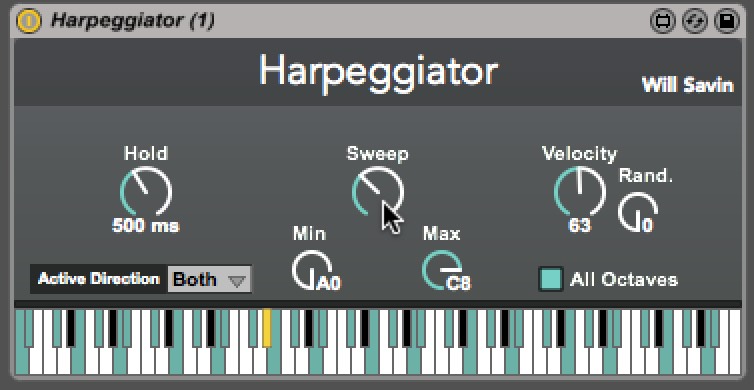Max For Live Sightings (Tag-Team Edition)

This month’s look at Max for Live devices has turned out to be an exercise in synchronicity - nosing around on sites like maxforlive.com and checking our Projects gallery for interesting MFL devices and idea is a kind of in-company pastime for some of us. My friend and colleague Tom Hall had volunteered to share something, and I discovered that he and I were – completely independently – looking at something similar: plug-ins that have their origins in the practice of playing a physical instrument. So, this week's Max for Live Sighting is a twofer - oh, wait - it's a threefer!
When it comes to the first of these Max for Live devices, I’ll let Tom start off.
One of my favorite things to do when I have a spare moment is to head over to maxforlive.com and just kick the tires, kind of like walking around the used car lot, but without the pushy salesman.
A nice freebie device I found is called “Nylon”. It's a straightforward MIDI chord generating device but with a twist - it generates chord strokes similar to a guitar, allowing you to play up to 6 strings per chord. It lets you control the stroke speed, accelerate (or decelerate) stroke speed (exponential or logarithmic curves, and the ability to increase/decrease velocity), add randomness to humanize the output, and set up to four different chord types you can arrange as an 8-step pattern..
It works nice with strings as, but is also a blast with synths.
Mr. Hall's reconnoiters are always good for blowing part of an afternoon. I downloaded Nylon, and really liked working with it - I tried using it with the !12tET (non 12-tone Equal Temperament) stuff I work with, with some inspiring results.
The idea behind the device isn't new – software such as the iPad OMG guitar, Apps/plug-ins such as Strum or Real Guitar, and even DAWs such as Logic Pro and FL Studio tout their ability to “add realism” to their virtual instruments. Symphonic string libraries are upfront about the lengths to which they go to imitate actual strings. But it's an elegant and inspiring implementation.
When it comes to emulating physical interactions with a physical instrument, you probably tend to notice things when they go amiss and the illusion is marred by something that doesn't seem right. As my pal Darwin Grosse points out, "Ever listen to someone trying to play banjo samples? They completely ignore the high G in the drop (bottom) position, and it just sounds wrong….” (That sense that instruments have their own playing techniques that ring true or false even shows up in acoustic performance - even Jimmy Page's playing on “Gallows Pole” sounds a little weird on that banjo he borrowed from John Paul Jones - that high G is in weird places).
For those of us who make patches, strumming/instrumental technical is a fascinating problem that combines a knowledge of practice with interesting variations on approaching the basic tools we use for arpeggiators or step sequencers that can yield interesting results and inspire us to head off in new directions. Here are the two more possible futures for you.
I was going down a similar path to Tom, myself – with a different instrument in mind. Specifically, I was looking for a way to handle the equivalent of a glissando on a harp (although I was looking at the Indonesian celempung) – and I ran across Will Savin’s Harpeggiator.

The other "birds of a feather" plug-in that made it onto my "check this out when you're done having fun with the device Tom turned you on to" list is the Omnipush, which repurposes the touchstrip on your Push device to strum keyboard sequences you create with your other hand on the touch pads.

If, like me, the Suzuki Omnichord (and its follow-on, the QC-1) is a “guilty pleasure” instrument, this looks promising, indeed.
So that does it for this week’s little tag-team-down-the-rabbit-hole Max for Live device outing. We hope you’ve found something interesting and inspiring – as devices, and as sources of departure.
by Gregory Taylor on March 28, 2017

